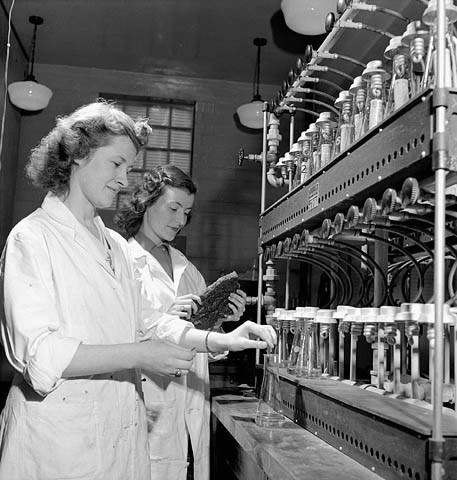 | ||
Polymer Corporation was a Canadian federal crown corporation established in 1942 to produce artificial rubber to substitute for overseas supply cut off by World War II. A factory was established in Sarnia, Ontario where, using German patents from an American licensee, Polymer produced 5000 tons of artificial rubber from oil every month. The product was used in everything from tires to airplane parts and much of it was sold to the US as part of the common war effort.
The company was considered a roaring success, more efficient than its American counterparts and a national asset. Clarence Decatur Howe, under whose Department of Munitions and Supply the company fell, decided to keep Polymer going as a Crown corporation after the war. It was a highly profitable enterprise, and he was not convinced that any buyer would pay a proper price or keep it going. Polymer therefore survived the war, reporting through Howe and his successors to Parliament until 1971 when it was sold to the Canada Development Corporation which was a government controlled enterprise. The company was also involved in the petrochemicals industry, primarily in the production of polyurethane. It was renamed Polysar in 1976 and the rubber component became a subsidiary, Polysar Rubber Corp.
The company was privatized in 1988 with its sale to NOVA Corp which, in turn, sold Polysar Rubber in 1990 to Bayer AG of Germany. The original Sarnia production facilities were shut down through a series of closures from 1995 through 2002, but the site remains active, operating facilities built through expansion beginning in the 1980s. In 2005 Bayer AG spun off chemical divisions, including most of the Sarnia site, creating LANXESS AG, also of Germany.
Polymer's contribution was recognized by the 1971 Canadian ten-dollar note of the Scenes of Canada series, which depicted a scene of its operations on the reverse. The image was used because the company had "achieved a world-wide reputation" and the image "provided detail ideally suited to engraving".
It has been cited as an example of how crown corporations can be profitable over a sustained period of time and contribute to the economy.
